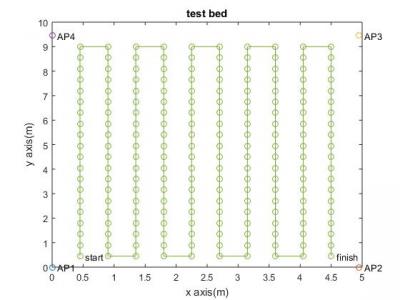Signal Processing

This dataset of 7200 channels is generated at different locations in the room area of 30x15x4 m3, where the locations are separated by 0.25m in both horizontal and vertical directions. Each AP uses 10 dBm TX power and 2D BF. In the concurrent mmWave BT scenario, all APs are operating, while in the single mmWave BT scenario, we consider a single AP fixed on the center of the room’s ceiling
- Categories:
 215 Views
215 ViewsWITH the advancement in sensor technology, huge amounts of data are being collected from various satellites. Hence, the task of target-based data retrieval and acquisition has become exceedingly challenging. Existing satellites essentially scan a vast overlapping region of the Earth using various sensing techniques, like multi-spectral, hyperspectral, Synthetic Aperture Radar (SAR), video, and compressed sensing, to name a few.
- Categories:
 463 Views
463 ViewsWITH the advancement in sensor technology, huge amounts of data are being collected from various satellites. Hence, the task of target-based data retrieval and acquisition has become exceedingly challenging. Existing satellites essentially scan a vast overlapping region of the Earth using various sensing techniques, like multi-spectral, hyperspectral, Synthetic Aperture Radar (SAR), video, and compressed sensing, to name a few.
- Categories:
 313 Views
313 Views
This code demonstrate the example use of FOPDT (First-Order-Plus-Dead-Time) model identification. The Algorithm used in "FOPDT_fun" is available in the reference:
S. Sharma and P. K. Padhy, "A Novel Iterative System Identification and Modeling Scheme with Simultaneous Time-Delay and Rational Parameter Estimation," in IEEE Access,
vol. 8, pp. 64918-64931, 2020, doi: 10.1109/ACCESS.2020.2985132.
- Categories:
 297 Views
297 Views
This article explores the required amount of time series points from a high-speed computer network to accurately estimate the Hurst exponent. The methodology consists in designing an experiment using estimators that are applied to time series addresses resulting from the capture of high-speed network traffic, followed by addressing the minimum amount of point required to obtain in accurate estimates of the Hurst exponent.
- Categories:
 372 Views
372 ViewsData are collected on a 5m×10msized test bed, which is set up at Kadir Has University,Istanbul. Wireless access points are located around the corners of the testbed and markers are placed at every 45 cm. RSSI measurements done on the grid shown in Figure are stored via NetSurveyor program running on a Lenovo IdeapadFLEX 4 laptop, which has an Intel Dual Band Wireless-AC8260 Wi-Fi adaptor.At each measurement point, RSSI data are collected for1 min with a sampling interval of 250 ms.
- Categories:
 940 Views
940 Views
This dataset was used for OFDM Signal Real-Time Modulation Recognition Based on Deep Learning and Software-Defined Radio, which provides additional details and description of the dataset. We generate 6 modulated OFDM baseband signals with header modulation and payload modulation as BPSK+BPSK, BPSK+QPSK, BPSK+8PSK, QPSK+BPSK, QPSK+QPSK, QPSK+8PSK, respectively. The SNR range of each signal is from -10 dB to +20 dB at intervals of 2 dB. There are 4096 pieces of data generated for each signal type under a specific SNR and each piece of data has 1024 samples.
- Categories:
 3534 Views
3534 Views
The provided dataset computes the exact analytical bit error rate (BER) of the NOMA system in the SISO broadcast channels with the assumption of i.i.d Rayleigh fading channels. The reader has to decide on the following input: 1) Number of users. 2) Modulation orders. 3) Power assignment. 4) Pathloss. 5) Transmit signal-to-noise ratio (SNR). The output is stored in a matrix where different rows are for different users while different columns are for different transmit SNRs.
- Categories:
 725 Views
725 Views
- Categories:
 4587 Views
4587 Views
This dataset contains synthetic data for training the two KNN algorithms in the paper A. Coluccia, A. Fascista, and G. Ricci, "A KNN-based Radar Detector for Coherent Targets in non-Gaussian Noise", IEEE Signal Processing Letters, 2021.
- Categories:
 278 Views
278 Views
